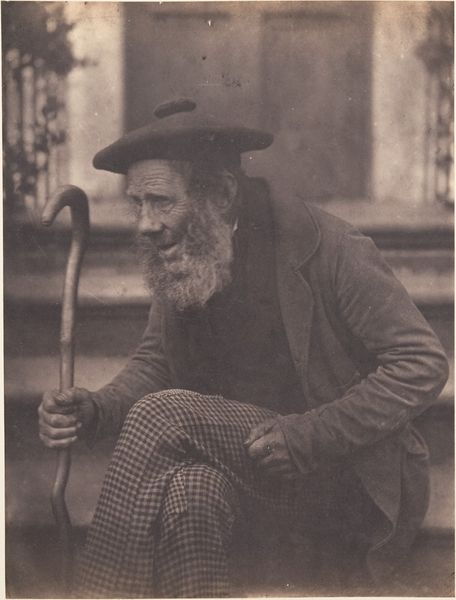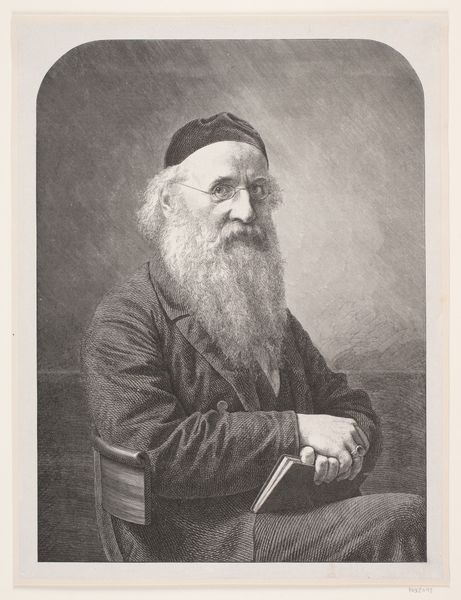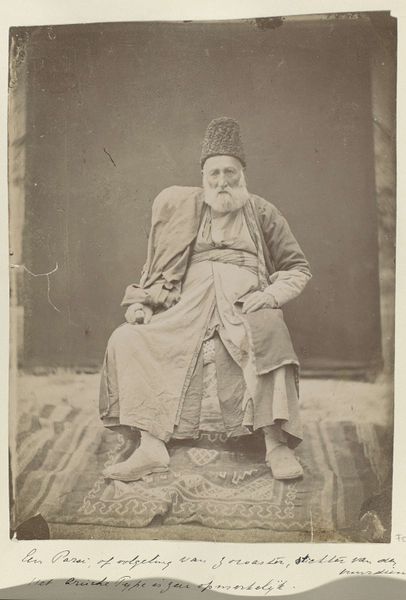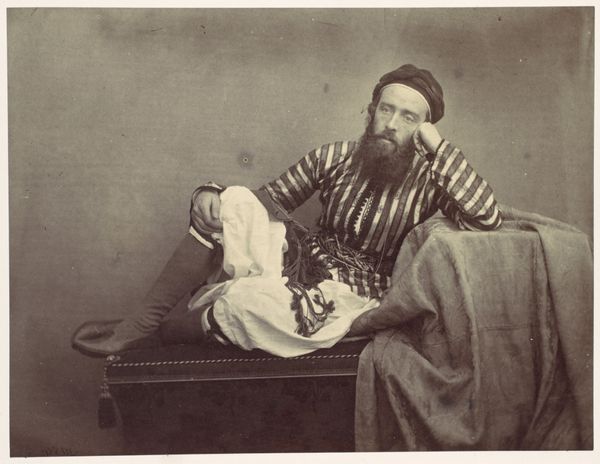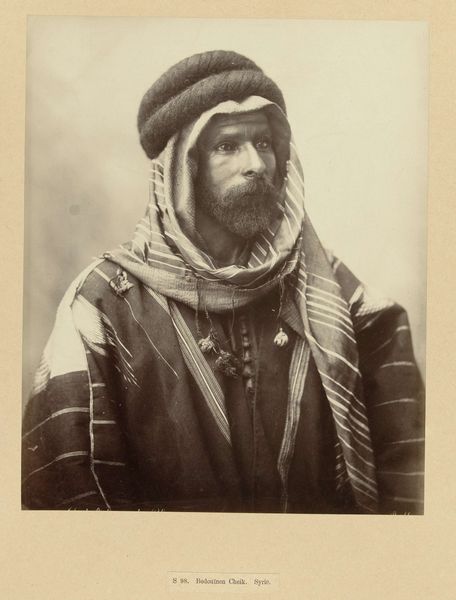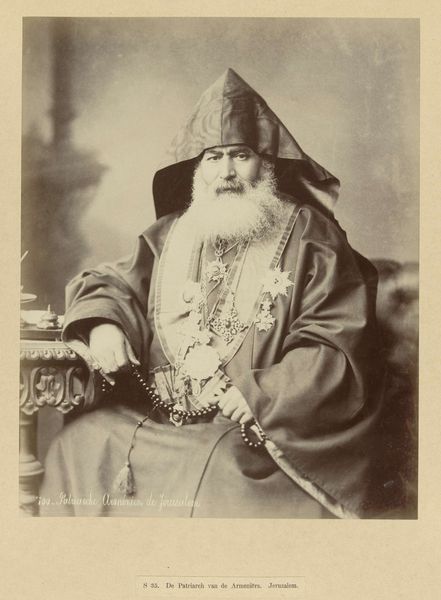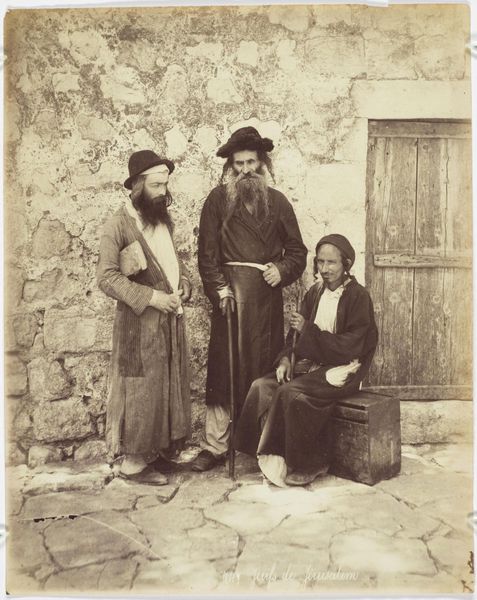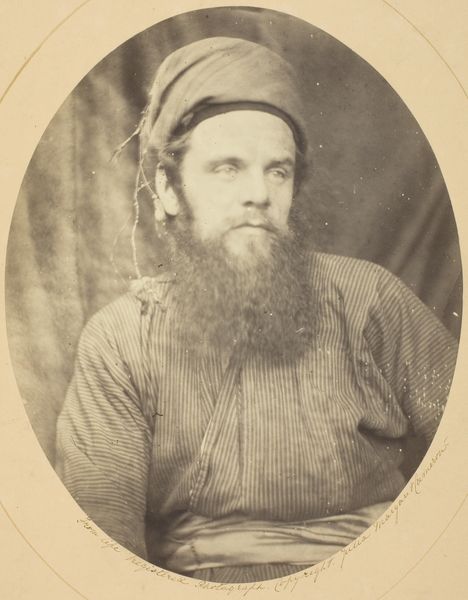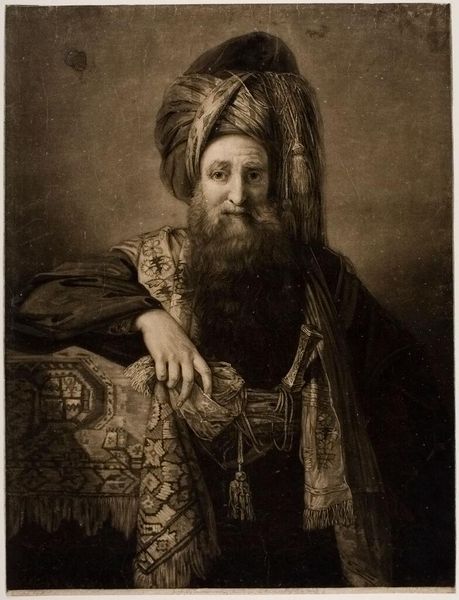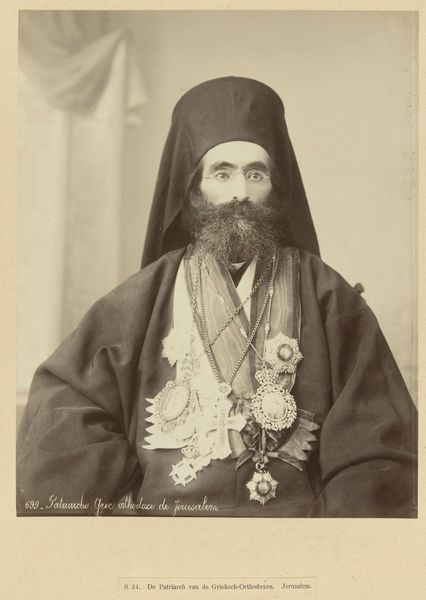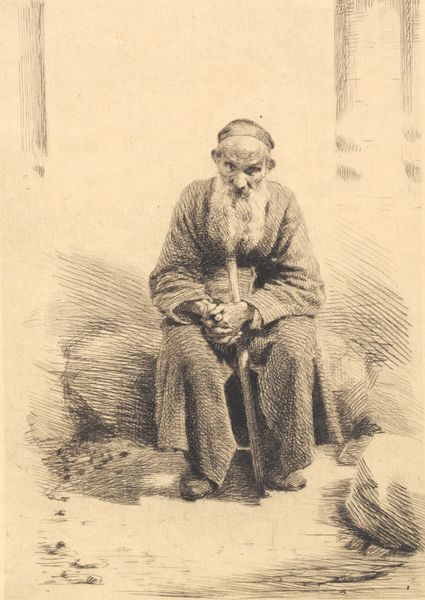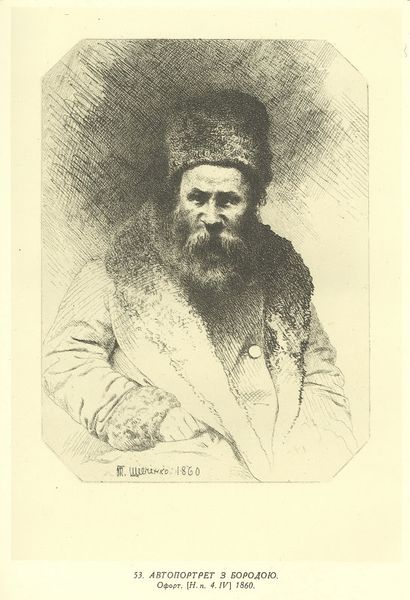
photography, albumen-print
#
portrait
#
photography
#
historical photography
#
islamic-art
#
albumen-print
#
realism
Dimensions: height 280 mm, width 220 mm, height 558 mm, width 469 mm
Copyright: Rijks Museum: Open Domain
Editor: We’re looking at Féliz Bonfils' "Portrait of an Unknown Rabbi, Jerusalem" created sometime between 1867 and 1877. It’s an albumen print from a photograph and I’m immediately drawn to how this image seems to bridge a historical record with an almost biblical presence. What story does this image tell from your perspective? Curator: This photograph, like others taken during that period, actively shaped the Western perception of the ‘Holy Land’ and its inhabitants. The creation and dissemination of images like this one helped to fuel both religious and colonial agendas. Editor: Colonial agendas? How so? Curator: Well, think about who commissioned and consumed these photographs. Often it was Europeans and Americans interested in documenting and, in a sense, possessing images of a region they considered biblically significant. This visual documentation contributed to a broader narrative of Western dominance and the ‘othering’ of non-Western cultures. Notice how the rabbi is posed; there's a certain ethnographic gaze, presenting him as a type rather than an individual. What impact does that have? Editor: I see what you mean. The emphasis shifts from his individual identity to a representation of Jewish culture. It’s not necessarily malicious, but definitely reflects a power dynamic. It makes me question the role of photography in shaping historical narratives. Curator: Exactly. These images were far from objective; they were constructed within a specific socio-political context and served particular purposes. Consider where such a photograph would have been displayed – likely in homes or institutions, reinforcing certain ideas about the Middle East. This gives insight into both intended meaning, and unintended consequence, through dissemination. Editor: This changes how I see it completely. Now it seems less about pure documentation and more about a complex interplay of power, representation, and historical context. Curator: Precisely. It’s important to consider how historical and social forces influenced its production and reception. That makes engaging with the work much more insightful.
Comments
No comments
Be the first to comment and join the conversation on the ultimate creative platform.
